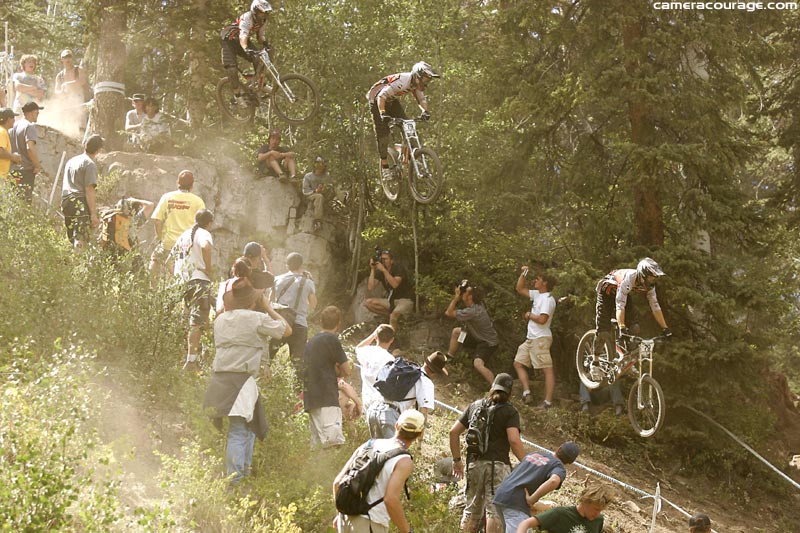How much rear travel do you need for DH?

Hi Lee,
I am interested in purchasing a new DH race steed. I am a competitive expert racer and I was wondering if a 7-inch bike would be a major disadvantage on MSC and G3 racecourses. I am specifically looking at the Commencal Supreme DH, which I understand a few of the WC teams are running. However, I am still skeptical of a 7-inch Down Hill race frame. I am not the gutsiest or smoothest rider, but I very much enjoy going fast down a racecourse.
Thanks For Any Advice,
Jeff
P.S. I appreciate what you are doing for the mountain biking community!
|
The more you click, the more I can post. Lee Likes Groceries dot com! |
Hi Jeff,
 In 2004 the Mighty Steve Wentz was riding a Turner with about seven inches of rear travel. Do you think that bike held him back? |
That bike won’t hold you back.
The overall balance and function of your bike is way more important than the amount of rear travel. When you factor in the human (you), raw travel means even less. Which bike can you pedal, turn, pump and otherwise braaap?
Comfort and confidence are huge: If you can ride your 7-inch bike every week, but you can only pilot your 10-inch sled once a month, you’ll be way faster on the smaller bike. I’ve seen guys who ride SX Trails day-to-day absolutely rip at Whistler, on the Shore and on race courses.
Oh, and let’s not forget Ariel Lindsley and Mike West. These ex-XC-weenies both raced Maverick ML-8s (with 6.5 inches of rear travel) at the MSCs this year. Ariel was a strong pro, and Mike owned semipro. These guys know how to ride those bikes!
In general, lower-travel bikes are lighter, lower, quicker and more responsive than longer-travel bikes. Their suspension is also a bit stiffer, which helps you plane across rough terrain. Read: Skimming over obstacles
Here’s another way to look at this:
If you’re not a rock star: You can’t wring the full performance out of a real DH rig. Show me someone not named Graves or Leov who out-rides his Yeti 303, and I’ll show you some swampland in Florida I’d like to sell ya. Since you can’t maximize a 45-pound 9-inch bike, you might as well rock a 40-pound 7-inch bike.
If you are a rock star: You’re strong and smooth. You pick good lines. You know when to skim across obstacles and when to drop in for some pump. You know how to maximize a bike that carries good speed through rough stuff and accelerates like a rocket. Anne-Caroline Chausson and Cedric Gracia ride that Supreme DH.
 Minnaar at Durango, 2004. |
And another thing:
When Honda built a downhill bike for Greg Minnaar, they had access to the best suspension in the world, as well as the best research. They could have built an engine-less CRF250R with 12 inches of travel, but they didn’t. According to race-day sources, the RN01 has about seven inches in the rear, and they usually run the front at six or seven inches. Honda collects telemetric data from practice and sends it to Japan. The Japanese engineers analyze the data and send the suspension settings to the race mechanics. These guys know their stuff. Seven inches.
Of course, Steve Peat and Nathan Rennie go pretty good on V-10s … It’s all about what you’re comfortable on.

Comments are closed.